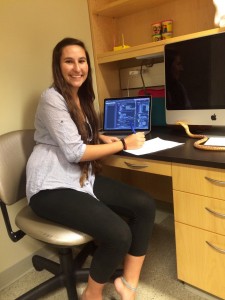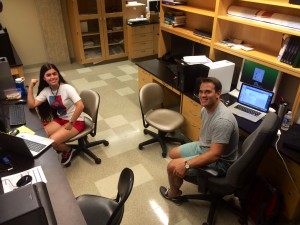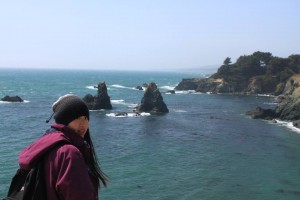On the morning of July 5th I departed Sea Ranch and made my 9-hour drive back to sunny SoCal. But before that, I needed to take care of a few things:
1. Pack. I still needed to pack that morning, which was not too hectic. Before leaving, I grabbed Jamie’s book, which I’ve started reading during one of the foggy GPI surveys. It was Ruth Ozeki’s A Tale for the Time Being and the story is partially set in an isolated island off the coast of British Columbia. In this haven for nature lovers, where the days and nights are kissed by wind and fog, the denizens’ daily conversations center on barnacles, crows, and the Great Pacific garbage patch; for me, reading about these people’s daily activities was like reading about the lives of the Sea Ranch residents. Thank you Jamie for lending me this book, and I promise to ship it back to you on the back of a whale.
2. Say goodbye to the Hichwas. As I entered the house, I was greeted by their dog, Bridget, amiable as always. I patted her on the head and looked for her owners. When I found them, we shared some parting words, and then I returned a Nat Geo magazine that they had lent me, since it featured an article on my favorite type of plant: mangroves. They told me to keep it, which was a great example of their generosity over the 5 weeks that I stayed in Sea Ranch. They’ve shared with me their warm abode, equally warm meals, and a wide range knowledge and experiences, which spanned Pigeon Guillemots, the workings of a camera, weird cuisines in Japan, and words to finish the daily crosswords from The Press Democrat that I worked on after my GPI mornings. Thank you Diane, Bryant, and also to Jim Weigand; the three of you have greatly enriched my Sea Ranch experience. With your help and patience, I’ve grown from a confused intern who didn’t even know the term “bluff” to a fledging birder.
3. Visit Gualala for the last time. After getting gas for my long trip and cleaning my windshield from all the dust its accumulated by sitting under the shade of the gorgeous redwood trees, I visited the weekly Farmer’s Market. Since every morning, I had a date with the birds of GPI, I never had the chance to check it out and visit the used book sales that they had. For $1.50, I got Gabriel García Márquez’s One Hundred Years of Solitude. After the transaction, the bookstore volunteer gave me a genuine smile and a “take care,” which reminded me of the great kindness and friendliness of the residents of the Sea Ranch and Gualala. In my stay there, I’ve met an array of kindhearted and fascinating people who have not only been a great help in my project, but have also made me feel a part of their community.
4. Drive down the highway strip for the last time this summer. I want to emphasize this summer, because this is surely not my only visit here. I did not directly say any goodbyes to anyone, but only “see you later”s. As I drove the Sea Ranch strip of Highway 1 for the last time during my stay, I paid good attention to the stunning sights that had become ordinary to me. I noticed how, as always, the fog enveloped and hugged the coastline, and I took that as Sea Ranch giving me hug, bidding me with a, “See you later.”
-Ramon
P.S. And now, more non-chick pictures that I’ve accumulated during my stay:

The Gualala River, which travels along the San Andreas Fault.

Another gorgeous view of the Sea Ranch, with fog in the backdrop, as always.

Gualala Arts brought in Yakut sculptors from Siberia to build an art piece at the Regional Park, in celebration of their Sakha Cultural Festival.

The beautiful final product.

Up close and personal with the sheep that graze all over the Sea Ranch.

Spotted a sagehen at the Sea Ranch.

Another sagehen spotting, this time at GPI.

































